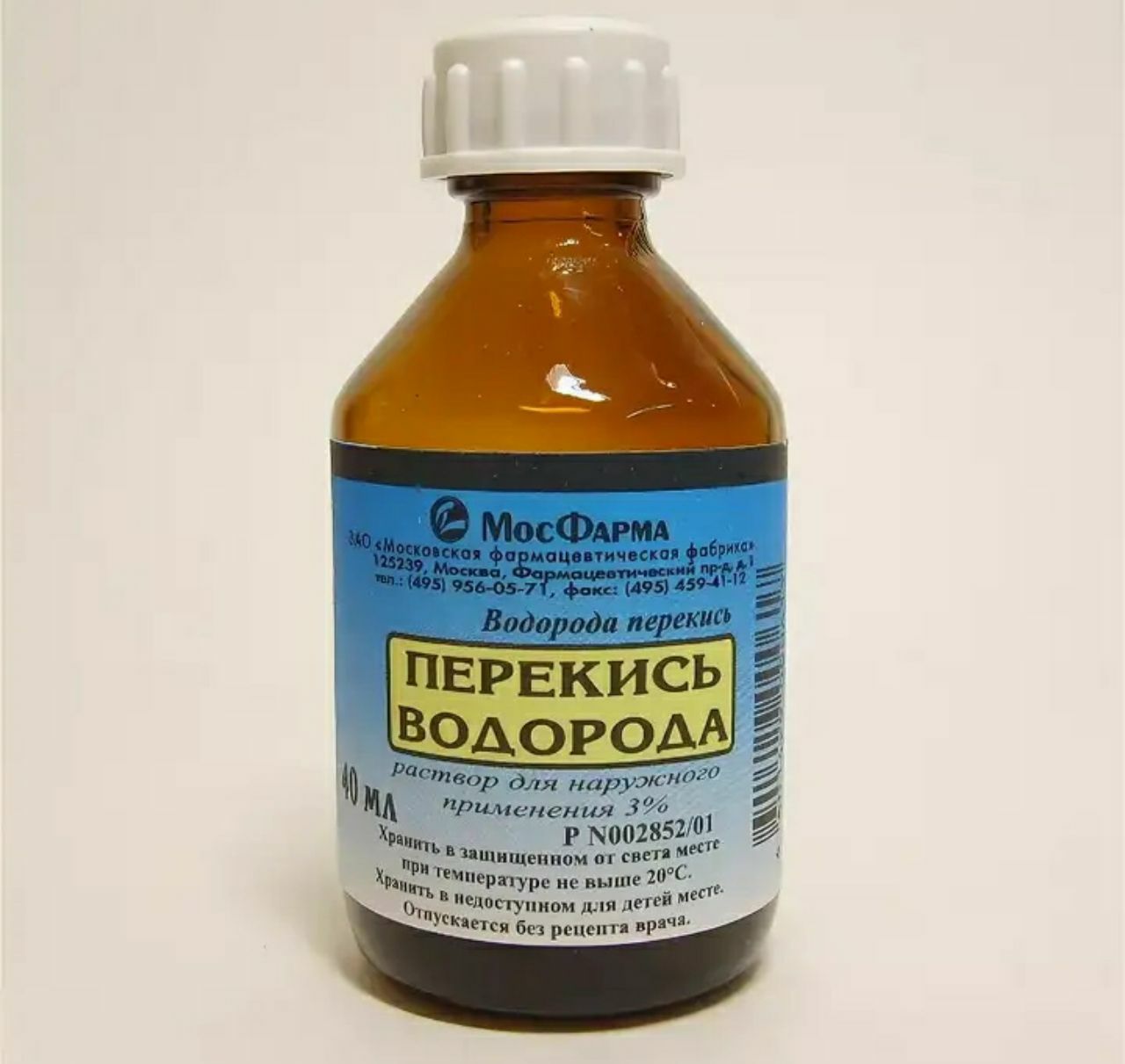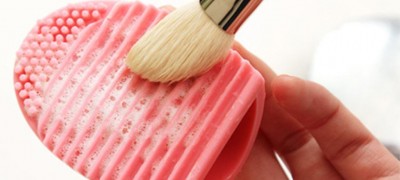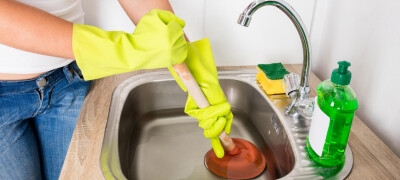How to get rid of mold on clothes
Mold often appears on pool tiles, bathroom walls, and other damp areas. It is quite easy to get rid of the characteristic musty smell and stains of the fungus. Foreign and domestic manufacturers of household chemicals are vying with each other to offer anti-mold remedies, one more effective than the other.

The situation is more complicated when pathogenic microflora appears on clothes. Harsh chemicals can effectively clean walls, but can be deadly to fabrics. It remains to figure out how to remove mold from white and black clothes in order to remove the fungus, but not spoil the material.
- Why does mold appear
- What to do if there is mold on your clothes
- Use of special tools
- Traditional methods of removing mold
- How to remove mildew from white fabric
- Dealing with mold on wool or silk
- How not to damage your clothes
- How to remove mold from shoes
- Is it possible to get rid of the smell
- Mold prevention
- Video: how to remove mold from clothes
Why does mold appear
Musty odor and mildew stains are caused by dampness. If clothes hang in a closet with high humidity or lie in a typewriter for a long time after washing, the fabric becomes a favorable environment for the growth of fungi and other pathogenic microflora. How it appears is understandable.
It remains to decide how to remove the mold from the affected wardrobe items, by what means it is more effective to get rid of fungal spores.

What to do if there is mold on your clothes
The best way to deal with a problem is to eliminate the root cause. It is very simple to do this, it is enough not to keep jackets, dresses and pants damp. Have you washed it? Remove from the machine immediately. Have you dried it? Place in a dry place. Is there high humidity in the cabinet? It makes sense to dry the air. For example, turn off the humidifier and turn on heating devices that evaporate excess moisture quite effectively.
If the appearance of mold could not be avoided, you will have to remove unpleasant odors and spores on your own. To do this, you can use both special and folk remedies. The main thing is to take into account the material from which the clothes are made. Let's figure out what is suitable for what.

Use of special tools
You can use Whiteness, Vanish or Domestos to get rid of mold on your clothes.
White
"Whiteness", it is also labarrakova water, is an aqueous solution based on sodium hypochlorite. Not all fabrics can be washed with this product.
Restrictions:
- Do not use for washing black and colored fabrics. The material may become discolored.
- Restrictions on the use of chlorine can be indicated in the instructions for the washing machine.
- Use with caution for cleaning garments with metallic decor. Buttons or cufflinks may darken.
- The fabric or nonwoven fabric can be susceptible to chlorine and chloride compounds.

Important! "Whiteness" is only suitable for white wardrobe items.
Examine the labels on the clothes carefully. If there are marks with a crossed out triangle or a triangle with two lines parallel to one of the sides, you cannot use "Whiteness"!
Algorithm of actions:
- Make sure the bleach is suitable for the machine and the fabric.
- Remove metal parts from clothing if possible.
- Soak things in a bowl of water, add half a glass of the product.
- Let sit for several hours.
- Put the machine to wash as usual.
- Rinse and dry in the fresh air.
Note! In the presence of non-removable metal decorative elements, it is worth reducing the concentration of "Whiteness".
Vanish
Vanish Oxi Action is a versatile stain remover that copes well with all types of dirt, including pathogenic microflora. The product does not include optical brighteners, so it can be used to wash any fabrics, light and colored. The only exceptions are woolen and silk items.
Advantages:
- Suitable for colored and light-colored fabrics.
- Suitable for machine and hand wash.
- High efficiency.
- Allows to remove any type of dirt.
- Low cost.
- Economical: one glass is enough for three machine washes.

Disadvantages:
- Cannot be used with products containing chlorine compounds.
- Not suitable for wool and silk.
Important! Cannot be used with products containing chlorine and chlorine compounds.
Domestos
Domestos, like Vanish, is a versatile stain remover. It also effectively removes mold. However, the product contains sodium hypochlorite, so it is worth considering the "chlorine" restrictions described in the "Whiteness" section.

Traditional methods of removing mold
Is it possible to effectively remove mold from clothes using folk remedies? Quite! To eliminate spores and unpleasant odors, you do not need to go to the store and buy expensive household chemicals. With the pathogenic microflora such improvised means as peroxide and ammonia, vinegar and borax, acetylsalicylic acid and even "sour milk" perfectly cope.
Lemon juice
Surely you have lemon or citric acid in your house. Both will help remove not only mold stains, but also musty odors. There is nothing complicated in the procedure. It is enough to drip lemon juice on the damaged areas of clothing and sprinkle it thickly with ordinary table salt. Wait until it dries up. Then the jacket or shirt should be washed and dried, preferably in the fresh air.

Turpentine
Turpentine has long been successfully used not only as a solvent for paints and varnishes, but also as an effective means for dry cleaning everything and everyone from any type of contamination.
Advantages:
- Less flammable than most other solvents. But only when it comes to a refined product! Fire resistance is highly dependent on the presence, absence of flammable impurities.
- Effectively removes unpleasant odors. Turpentine, made from essential oils of coniferous trees, simply interrupts all other odors.
- Copes well with all types of contaminants, including stubborn stains from food, varnishes and paints, pathogenic microflora and so on.

Important! Use ONLY peeled turpentine to clean your clothes. Unrefined may contain resins that will stain themselves instead of removed.
Several applications:
- In the form of a special cleaning paste sold in stores (turpentine + white clay + ammonia + additives).
- Turpentine + gasoline (turpentine removes mold, gasoline removes stains that may remain after cleaning with a solvent).
- Turpentine with ether in a ratio of 4 to 1.
- Turpentine + white clay.

Turpentine and white clay are found in store-bought cleaning pastes, but they can be used separately. The algorithm of actions is simple.Turpentine is applied to the damaged areas and sprinkled on top with white cosmetic clay. From above, the surface to be treated is covered with a piece of fabric folded three or four times and ironed with a hot iron.
After that, the item is washed and dried. It is recommended to iron the dried clothes through the fabric again, but now on both sides.

Hydrogen peroxide
Peroxide is suitable for light-colored wardrobe items. It is used both in pure form and in combination with bleach. The second option is not suitable for delicate fabrics. Pure peroxide or a solution with chlorine is applied to the mold stains, after a few minutes they are washed in the usual way, either in a machine or by hand.

In the second option, chlorine, peroxide and spore residues are often wiped off with a stiff brush before being thrown into the wash.
However, if the fabric is not coarse enough, this should not be done.

Ammonia
The procedure is as follows:
- Place a bowl or saucepan with a quart of water on the stove.
- Add a few drops of ammonia and a couple of tablespoons of regular table salt.
- Bring to a boil and simmer for about thirty minutes.
- Remove the container from the stove.
- Dip the part of the clothing affected by the fungus in the hot solution.
- After a quarter of an hour, rub the injury well with both hands. If the fabric is rough enough, you can use a stiff brush.
- Rinse, dry.

Important! This option is not suitable for some synthetics with low resistance to high temperatures. If the label states that the item should be washed at 40 or 60 ° C, you should not throw the clothing into boiling water.
Laundry soap
Cotton, coarse calico and linen are quite delicate and delicate fabrics. But you definitely won't harm them with laundry soap! Light-colored cotton, coarse calico and linen things are rubbed in places affected by mold with soap. Then they soak for about half an hour in a solution of soap and washing powder with water.

Stretch lightly by hand, after which they are soaked for 10-15 minutes in warm water with peroxide at the rate of a tablespoon per liter. Then you need to rinse the clothes, wash, dry.
Vinegar
There are two ways to remove mold on clothes with vinegar.
First:
- Put things contaminated with fungal spores in the washer.
- Add powder, turn on the machine and wait until it is filled with water.
- Switch off.
- Pour a glass or two of vinegar, turn on the wash.
- Take out the laundry, wring it out, dry it.

Second:
- Soak clothes in a vinegar solution (2 cups per 10 liters of water) for a couple of hours.
- Rinse, wash, wring out, dry.

Bura
Lemon juice, vinegar, milk and borax. Everything is in proportion one to one. The solution is applied to mold spots, the clothes are covered for 30-40 minutes with cling film, then rinsed, washed, wrung out, dried. This method is suitable for removing mildew from light colored fabrics.

Acetylsalicylic acid
Acetylsalicylic acid is also more suitable for light colored items. The algorithm is typical: the cleaning mixture is applied to the dirty places, after a while the clothes are washed and dried in the fresh air. Composition recipe: 6 tablets of acid are dissolved in 100 g of grape alcohol or vodka. Instead of acetylsalicylic acid, ascorbic acid can be used. Only you will need not six pills, but four.

Dairy products
You can even remove the fungus with "sour milk".It is enough to soak clothes in low-fat kefir or yogurt for half an hour, then wash and dry. In order to spend less product, you can not soak the whole thing, but apply the "sour milk" only on the areas contaminated with spores. Otherwise, the procedure is the same.

Boric acid
Boric acid is a cleaning agent, and at the same time a preventive one. Just like fermented milk products, it is either applied to damaged areas, or used to soak the entire wardrobe item. It is used as a solution. Enough 30-40 ml of acid per liter of warm water.

How to remove mildew from white fabric
Many of the products described above are suitable for white fabric: Vanish and "Whiteness", peroxide, acetylsalicylic and ascorbic acid. Not only Vanish will do, but other commercial bleaches as well. After all, it is for light fabrics that they are primarily intended.

Dealing with mold on wool or silk
Wool, silk and cashmere are best treated with turpentine, complete with white clay. The method is described in detail in the corresponding section. A weak solution of ammonia in water will also work. The proportion is approximately 1 to 16.
Observe the following guidelines when washing wool:
- Do not use the washing machine modes with water heating above 30-40 ° C.
- Suitable detergents should only be poured into the appropriate compartments, never onto the clothes themselves in the drum!
- Prolonged soaking, the use of a hair dryer and household heating devices for drying are highly undesirable.

Also, all manipulations involving strong mechanical stress on the material are not recommended. Namely: twisting, stretching, hand washing, spinning (including in a typewriter). Examine the labels on the clothes carefully. Use only household chemicals that can be used to wash woolen items.
How not to damage your clothes
- Examine the labels on the clothes. Follow the manufacturer's recommendations.
- Read the instructions for household chemicals.
- Use products containing harsh chemicals very carefully.
- Do not use hard brushes or detergents containing abrasive particles on delicate fabrics.
How to remove mold from shoes
It is easier to get rid of mold if it appears on your shoes. The procedure is as follows:
- Thoroughly wash the shoes or boots from the outside with a foamy soapy solution (laundry soap, grated on a fine grater + warm water).
- Treat with peroxide from the inside.
- Wait a while.
- Rinse the outside of the shoes again.
- Treat with antifungal agents.

Is it possible to get rid of the smell
Many of the store products and folk remedies described above help get rid of not only the fungus, but also the characteristic musty smell. If washing doesn't work and things continue to spread unpleasant odors, you can use stronger cleaning agents ... or put your clothes in the freezer.
How it works? Items are pre-packed in polyethylene or placed in a tight-fitting bag, after which they are placed in the freezer of the refrigerator overnight. The cold kills the spores and eliminates the musty smell at the same time.

You can also use special products produced by manufacturers of household chemicals. It is easy to find on sale a wide variety of absorbers and odor neutralizers for wardrobes and shoe cabinets.
Mold prevention
Several popular and fairly effective preventive measures:
- Dry things well. Do not put clothes in the closet until they are completely dry.
- Remove items from the machine immediately after washing.
- Do not throw moldy wardrobe items into the dirty laundry basket! It is worth getting rid of pathogenic microflora as soon as it is noticed.
- Do not store jackets, skirts, pants, and blouses in wet locations.
- Items stored in cabinets and dressers should be ventilated from time to time in the fresh air.
- Use boric acid as a preventive measure.
- Use drugs that absorb moisture (granules, tablets, etc.).
- Maintain an optimal indoor humidity level. Don't overdo it with moisturizers.

The best way to deal with a problem is not to bring it up to date. If you do not keep your clothes damp, then no fungus will start in it. Pay more attention to prevention, try to nip mold in the bud. If the trouble still occurs, get rid of the pathogenic microflora, following the recommendations of the manufacturers of both clothing and household cleaning and washing chemicals.
Video: how to remove mold from clothes





